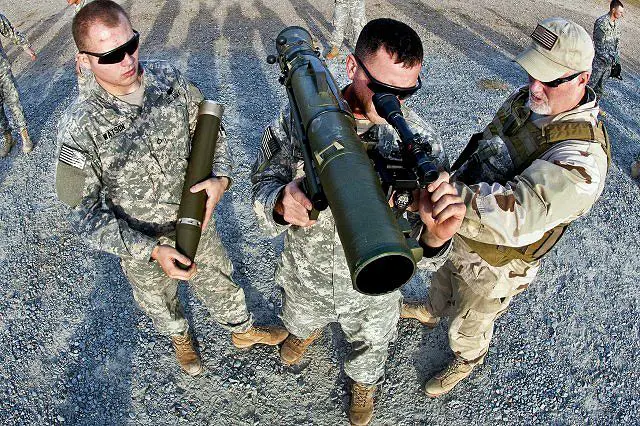Carl Gustaf 81mm Multi-Role Anti-Armor Anti-Personnel Weapon System MAAWS in U.S. Army 2501125
| a | |||
Focus - Carl Gustaf in the Unites States Army |
|||
| Wednesday, January 25, 2012, 04:41 PM | |||
| Carl Gustaf 81mm Multi-Role Anti-Armor Anti-Personnel Weapon System MAAWS in U.S. Army. | |||
With the need for United States Soldiers in Afghanistan to engage the enemy at longer distances, Picatinny Arsenal has completed an initial training and fielding of a weapon for traditional Army units previously used only by special operations commands. The Multi-Role Anti-Armor Anti-Personnel Weapon System, or MAAWS, also known as the M3 Carl Gustaf, has been in the United States Special Operations Command inventory since 1991. |
|||
 The Multi-Role Anti-Armor Anti-Personnel Weapon System, or MAAWS, also known as the M3 Carl Gustaf, has been in the United States Special Operations Command inventory since 1991. |
|||
| |
|||
However,
the unique capabilities of both the system and its ammo led to a forward
operational assessment, known as a FOA. An
operational need for the MAAWS system occurred in May, when troops reported
that they were having a difficult time in reaching the enemy at those
distances. |
|||
 A civilian instructor coaches two paratroopers with the 82nd Airborne Division's 1st Brigade Combat Team on how to use a Carl Gustav 84mm recoilless rifle during a certification class Dec. 6, 2011, at Fort Bragg, N.C. The multi-role weapon can be used against armor, fortifications and personnel. (Photo credit U.S. army Sgt. Michael J. MacLeod) |
|||
|
Previously used only by special operations commands,
beginning with the Army Rangers in 1989, the Navy SEALS in 1997, and later
the rest of the U.S. Special Operations Forces, the need for the system
has become more apparent among traditional Army units.
"This fielding really could not have been done without the help from SOCOM (Special Operations Command)," Thoguluva said. The United States Special Operations Command allowed the transfer of these systems and its ammo to the Army for this fielding. The quantities for this initial fielding were 58 Carl Gustaf Rifles and 1,500 Rounds of High Explosive and High Explosive Dual Purpose Ammunition. Also, 114 Soldiers and 21 armorer maintainers were trained in its use. Although, there are eight varieties of combat rounds and two training rounds for the system, the High Explosive and High Explosive Dual Purpose Rounds are the only two included in the assessment. The other rounds can provide users with heat, illumination, anti-structure, multi-target and smoke capabilities. As the need for additional capabilities increases with the Army users, other rounds could be fielded to the Army troops in the future. The gun is breech-loaded and can be fired from the standing, kneeling, sitting or prone positions. A built-in detachable bi-pod helps the shooter raise the weapon off the ground while shooting from the prone position. The propellant gas escapes through the rear of the weapon, which equalizes the force of recoil. In the AT4-CS type system, a salt-water solution is ejected rather than exhaust, which is one reason why the AT4-CS does not have the range of the MAAWS. "Remarkably, there is actually more recoil from firing a 7.62mm round than this 84mm round," Thoguluva said. "It's a balancing act," he added. "When shooting a 7.62 there is no exhaust gas, so the shooter's shoulder takes the majority of the recoil." This balancing act puts less stress on the shooter. The current MAAWS system weighs approximately 22 pounds with each round of ammunition weighing less than 10 pounds. Material developers are working to lighten the load of the rifle by five to six pounds. The user can usually load and fire four rounds within one minute. The blast radius stemming from a High Explosive round is anywhere from 50 to 75 meters. The user sets the firing distance on the MAAWS by simply rotating a labeled meter at the top of the round. The High Explosive Dual Purpose round can detonate in two ways: upon impact of the intended target, or in a delay mode where it will penetrate a target, then detonate at a pre-determined time. Since fielding the system, feedback from the field has been very positive. "It's
safe to say it's doing its job. I can't really tell you much more than
that," Thoguluva said. |
|||


























